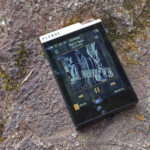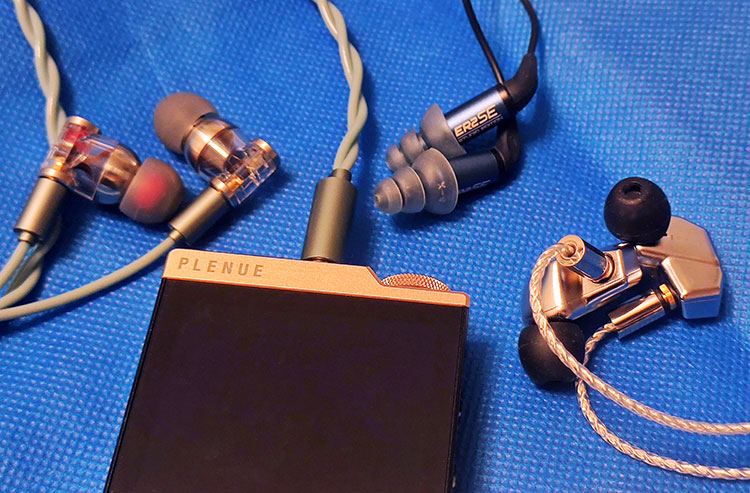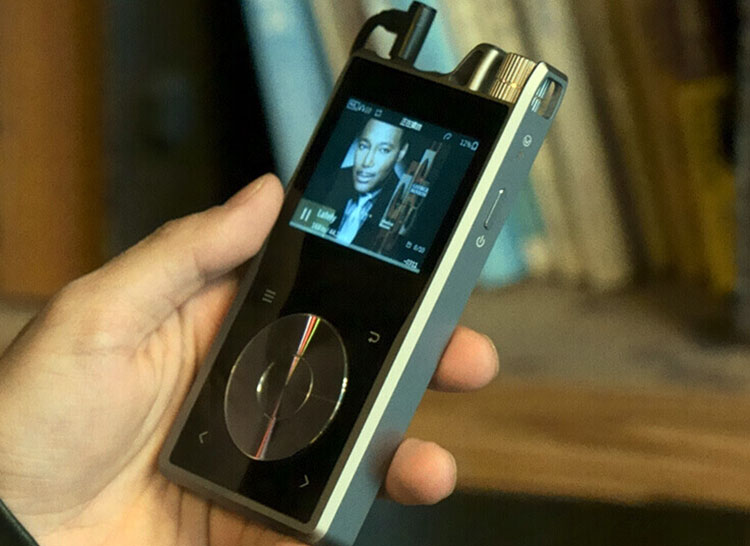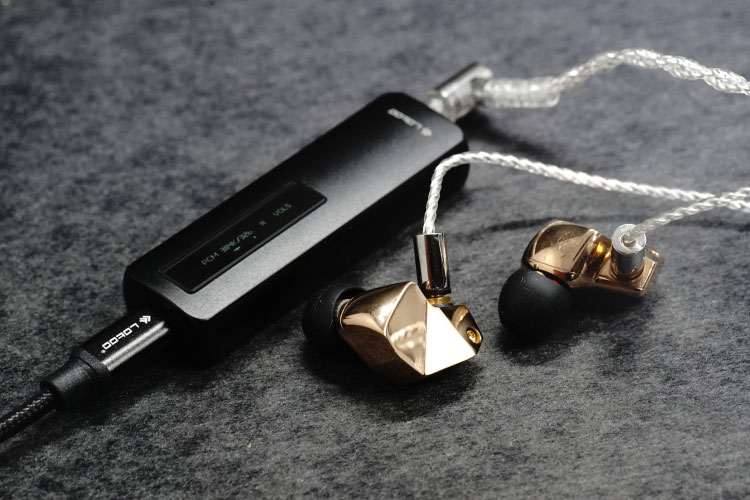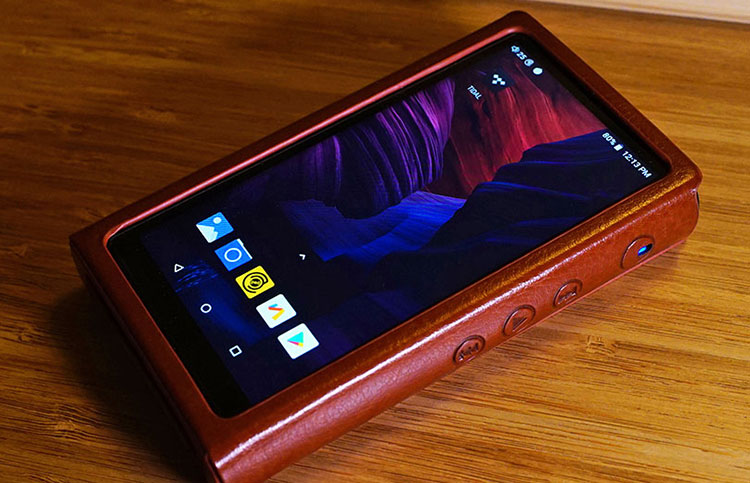The Cowon Plenue D3 is a 3rd generation micro-portable DAP featuring a dual CS43131 DAC and up to 45 hours of battery life. It is priced at $370
Disclaimer: The Cowon Plenue D3 sent to us is a sample in exchange for our honest opinion. We thank the team at Cowon for giving us this opportunity.
To read more about Cowon products we reviewed on Headfonics click here.
Note, this review follows our new scoring guidelines for 2021 which you can read up on here.
If you are into the hobby more than a decade ago then you would probably be familiar with the Korean brand Cowon, a pioneer in equalizing options with very industrial designs.
I could still clearly recall the joy with their SoC-based designs D2, J3, S9 with different applications installed and a very responsive interface from more than 10 years ago, some of which can rival the user experience of DAPs released nowadays.
It has been a while since I have touched their creations and this time the Plenue D3 comes to us, the successor to their Plenue D2 DAP which fits well on any palm.
The player comes with Cirrus Logic CS43131 Dual DAC, 2.5mm Balanced output, and aptX Jet Effect that supports user tuning over Bluetooth transfer, not to let alone BBE+ and the other fantastic built-in tuning profiles.
There are also some especially useful functions for language/instrument learners such as slow/high-speed playback and A-B repeat.
Some older entry or mid-end Cowon players may be shy in power but this time the Plenue D3 is able to output up to 4Vrms on Balanced with such a tiny package. The form factor looks awesome as always as it is from Cowon.

DAC & Amp
The Plenue D3 uses the Dual DAC CS43131 and supports up to DSD128 natively, a power-efficient Digital to Analogue converter with a high-fidelity headphone amplifying circuit that offers high performance under low power drain.
The small IC can drive 4Vrms of output going balanced and 2Vrms unbalanced though we have no official loading rating for those specs.
There are also digital-interpolation filters to press down ringing noise and echoes in the signal and support five selectable digital filter responses. The balanced output is free of noise and exceptionally clean with most IEMs being plugged into it, also quite powerful like it is claimed.
There is little information on what OpAmps or parts are used. On paper, the Plenue D3 achieves a 131dB SN ratio, 0.0006% THD+N also 147dB Stereo Crosstalk with the balanced connection so the work on the noise floor and distortion levels are good.
The specs look pretty promising and we will see if the performance is consistent with higher loads in the sound session.
Design
The look definitely speaks for itself. The Plenue D3 elegantly blends together metallic elements, an analog user control experience as well as a solid, seamless body design.
There is a rim of light that goes under the knurled 140-step digital volume control knob, and it will light up every few seconds during playback.
The screen is nicely laminated such that when it is off you can hardly see its edge. You will experience a simple UI that is running on Cowon’s proprietary SoC infrastructure, a bit of Déjà vu from the previous generations
You will find the on/off button and playback control on the right side of the machine, also a USB-C jack for charging/ file transfer down the bottom. Without any doubt, you can easily control the Plenue D3 single-handedly and slide it down any pockets at ease.
Screen
The Plenue D3 measures around 3” with a tiny 2.8” touch-capable LCD panel on top. The resolution is not too high on the Plenue D3 which is probably a way to reduce system load and to maximize the playback hours, but the higher pixel density will be preferred when there are full HD screens on competitor’s players.
The touch functionality is quite responsive but the UI retains some of the primitive design elements from their early designs. You can easily call out the menu from the playback screen and access tuning options and playback controls without the need to go through many clicks, and this makes the user experience excellent.
There is even a toggle to let you switch between different themes just like on the original D2/D2+, including a cover flow style interface that shows the album covers sidewards. The GUI is very easy to navigate, I bet anyone can control it right away, and it is very polished after years of experience.
Memory
There is 64GB onboard and the microSD card slot supports up to 128GB expansion in FAT32 format. Not the best figures but definitely enough for most users. I am using a red SanDisk 128GB card and it works smoothly.
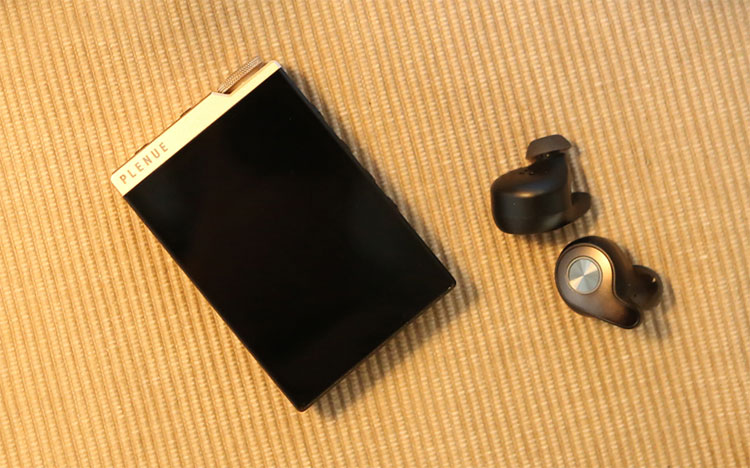
Bluetooth
The tuning profiles are still in effect when you are using Bluetooth connections. Although I will always prefer using the balanced output for the best quality, the Bluetooth connection is functional and handy when you want more portability.
In fact, it is able to revitalize some bassy TWS and breathe more energy into the output with the aptX Jet Effect support. The Plenue D3 supports A2DP, AVRCP, SBC, aptX codecs, and the EQ/ filtering effects are very handy for a quick change of mood during the commute.
Battery Life
The Plenue D3 is one of the most power-efficient machines and I am not charging it only after 1.5 weeks of listening, around 2 hours per day.
Officially Cowon puts “45 hours with MP3 128kbps”, this is not really realistic unless you have many old tracks in low-res but practically with 24/96 high-res files you will get 30 hours which is great.
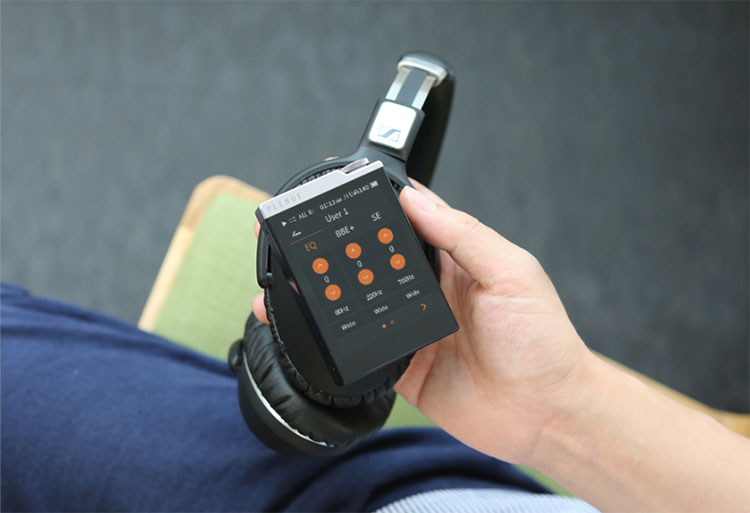
DSP effects
Cowon has come up with its own digital sound processing solution with 44 filter presets + 4 user-defined presets. They aim at fitting different usage scenarios and music genres in order to let the tracks sound natural and close to the original presentation.
Cowon explains that the BBE manipulates the speed of different frequencies and allows users to clearly identify what instruments are in the mix.
The technology reproduces the treble with more accuracy and compensates for the delayed treble signals which hinder the natural production of sound.
With BBE digital filters the phase is corrected by timing the treble signal at the right pace like how it reaches the ear earlier than the other frequencies in reality. In such a way higher density and sound clarity are achieved.
BBE Synergy Impressions
There are 4 slots for user 5-band EQ tuning which you can switch between quickly. You could also turn on BBE+ tunings and pair them with the built-in 5-band equalizer at the same time to fine-tune the output. With better power in the output and low noise even after these filters are applied there is quite a lot of flexibility to tweak the sound.
I think it is not exaggerated to say most of the stock equalizing options on other sources sound lossy or altering the sound in some uneasy ways, but Cowon manages to offer high clarity in the treble, control in the vocal range, and well-defined image even after some effects are applied.
The BBE filters can quickly freshen up the vocal clarity and speed in the lows and the MP Enhance can give old MP3 files a good boost to sound clearer and more textured.
The Room reverb filter is also surprisingly natural sounding and is able to drag up the staging performance instantly with some IEMs that sound narrow, without pushing back the vocal and sound curtained. It is very recommended to play around with these filters and you may be surprised by what they can do.
Officially there are some explanation on the digital filters:
- BBE – clean and refreshing sound.
- Mach3Bass – a bass enhancement that stresses the lower frequencies.
- 3D Surround – enhance the perception of the soundstage.
- MP Enhance – compensate for lower quality signals.
- Reverb – Maximize the natural and live presence of the sound(Chamber, Room, Club, Hall, Auditorium, Cathedral, Stadium, Canyon, Long)
- BBE+ – natural reproduction of the original sound
Sound Impressions
Summary
I could still remember at the time when I was using the original D2 a decade ago, I was very hooked by the transparent performance listening to Avril Lavigne albums and it was the best machine for JPop to me at that time, with DSP presets that are especially useful to instantly enhance dynamics/ tonal balance.
I find the Plenue D3 consistent in their house tuning, which is very transparent while being much more powerful and better in noise control. The treble is particularly very dense and clean without peaking and there is a lot of air that makes fast percussion very enjoyable.
The Plenue D3 is able to keep up with amazingly fast drumming or digital instruments that are quickly rolling with articulation that is very smooth with tight and agile impact speed. There is enough power for the Plenue D3 to handle multi-BAs and some higher impedance IEMs nicely but may not sound as full as when it is paired with small to medium loads.
To me, the rather fast bass attack makes it a great match with dynamic IEMs that have more expressive bass decays and mid-lows coloration, such as the ddHiFi Janus that houses a 10mm dynamic driver with 32ohm impedance.
This is a very airy combo that has punchy bass and very airy vocal reproduction at the same time, albeit it may sound a bit distanced when darker sounding vocals are in the mix.
Light voices on the Janus are very well defined and translucently extended but without the sense of harshness or spikiness. The vocal presence is well boosted by the pronounced 5kHz area and very sibilance-free with well-controlled in the higher frequencies beyond that range.
As such, I prefer switching to the Pop filter which lifts the vocal range, giving it more clarity and weight while “clearing the mud” and draws the vocal out from behind the curtains.
Staging
With a lot of air in the treble and good accuracy, the staging is easily large and controlled with different IEMs. The treble is rendered very naturally, and instruments are very well spaced out under stock settings.
The vocal positioning is slightly far off though not curtained and personally I prefer equalizing slightly the midrange to bring the vocal closer and give the mix more warmth.
With the BBE+ effects on the vocal line sounds sweet and still being very well defined and positioned, these tuning options would be very handy for new entrants to the audio hobby or if you find manually adjusting frequencies in the user-defined equalizer too troublesome.
Synergy
Etymotic ER4P/ER2Se
If you enjoy even more clarity you can pair Etymotic IEMs such as the ER4P or the ER2SE to the Plenue D3. With these pairings, you will be getting a super clean, fast punching output though lighter and in the bass and thinner around the 250Hz range.
This is however very enjoyable with some J/Kpop and instrumentals with high reaching overtones and you could boost the mid-bass with some filters or by equalizing.
Putting the ER2SE on and with Black Pink/Aurora albums in the Plenue D3, the singers are well separated in the mix and the instruments being distinctly positioned. You can feel the higher frequencies radiating from one point instead of smeared or having a fat image.
In short, the Plenue D3 is doing an excellent job in handling the higher register sounding a bit thin but also quite sweet with great accuracy.
The base tuning is exceptionally clean but again there is enough weight for vocalists that have a lighter or cleaner voice, for example, Avril Lavigne, Utada, and Kana Nishino. With IEMs that sound denser or with more warmth in the mids, you may get a cleaner response.
Earsonics STARK
With the Earsonics STARK, the treble is very polished, the mids are smooth and the bass is fast but controlled. I just wish there is more power in the mid-bass and bass but at the same time, the lighter hitting mid-bass makes it sounds swift for simple piano tracks and some joyful light jazzes.
Final B1
Switching to the Final B1 there is more energy in the lows and the staging is stretched wide with the vocal being slightly pushed back.
Likewise, to the STARK I feel like slightly more power is needed to give B1 justice but with the JetEffect filters, the vocal clarity and presence can be immediately lifted while not making the mid-range sound lossy.
The output power and quality are decent with such a small form factor, and when you need to pump up dynamics and clarity, the JetEffect DSPs filters are very handy.
Select Comparisons
Questyle QP2R
The QP2R flashes up in my mind when I listen to the Plenue D3 on the go, as it carries a similar tone that emphasizes the clarity and accuracy in the treble.
The QP2R obviously is stronger in terms of raw power delivery and it sounds more organic in the vocal. The gain and amping power are also stronger on the QP2R but at a fraction of the price, the Plenue D3 can pretty much rival its preciseness and penetration in the treble.
The sound on Plenue D3 is also more flexible to be shaped by the JetEffect/ BBE+ presets, while the QP2R is obviously weaker in such regards being more troublesome to navigate and does not have as much memory slot for user presets.
If you are seeking sweet but thin vocal performance and have a bunch of dynamic easy to drive IEMs in your arsenal, the Plenue D3 will probably be a good match and it also sounds sweeter with some of the sound effects, that makes pop and jazzes a joy to listen to.
Lotoo PAW S1
The PAW S1 is another device I find similar to the Plenue D3. Both have a lot of equalizer/filtering options that serve different scenarios and purposes, so I am trying to put them head-to-head and see how their filters fare against each other.
In general, the PAW S1 is more exaggerated in its tuning effects and there is still a lot of texture being retained while different frequencies are being boosted.
The PAW S1 is doing a good job giving very obvious changes in clarity and frequencies to be boosted when switching between profiles, especially on headphones, yet it sounds more digitally altered than the Plenue D3.
The Plenue D3 masks the filter on different frequencies more gently while being as opened up and tight in the higher register like before the filter is implemented. There is also better bass power and density with the Plenue D3 that holds the grounds for the bass line and supports bigger swings.
On the other hand, the PAW S1 does not sound as powerful when switching to profiles that boost the bass. Nevertheless, the PAW S1 is still a very convenient 4.4mm solution with tons of effective tuning options for phone users, and it sounds quite wide in staging.
However, if you are looking for less power drain to your phone and some quick tuning options alike as well as better overall performance, the Plenue D3 will be my pick.
HiBy R5 Saber
When I reviewed the R5 Saber earlier I put it with the Plenue D3 for quick comparison and I am bringing them together again to revisit their differences.
Although the R5 Saber is positioned as a cleaner version after the R5 it still has a good hint of warmth, especially when compared to the Plenue D3 that is distinct in its treble tuning and thinner in the vocal line.
The R5 Saber sounds warmer and more forgiving with a rounded upper treble tuning while the Plenue D3 gets more aggressive in extending to the higher notes but at the same time being well controlled in the upper register.
With the same tracks loaded the Plenue D3 sounds less as weighted with lower/darker voices, breathier, and slightly hollowed at times with the stock tuning. Yet this helps expand the perceived staging and clarity.
The R5 Saber is a safe bet for Android OS, 4.4mm output, and streaming if you prefer slightly warm, fuller mids for Cantopop. Also, it is a good choice if you listen to a lot of streaming contents, acoustic guitar, or electronic music with its WiFi capability.
The Plenue D3 sounds rather different and is more natural with the higher frequencies being more exposed, and it is making every song more exciting and textured with its accurate treble.
Our Verdict
The Plenue D3 brings back a lot of memories and I am appreciating the way they bring forward SoC designs with newer generations of filtering that could be practically used.
The trade-off for precision, longer playtime, and ultra-low noise commonly is the lack of dynamics and power. However, Cowon manages to take a good balance in the tuning with this entry-mid level device to hide the flaws while leaving room for the filters to practically enhance different areas in the output with various earphones.
The Plenue D3 delivers a treble experience similar to some higher-end machines if not more potent with a lot of perceived detail and texture therein. If you are a fan of the airy and rounded treble in Etymotic IEMs and want a highly transparent output for your IEMs, the Plenue D3 with its DSP effects is a good match.
Cowon Plenue D3 Specifications
- DAC: 2 x CS43131
- SNR: 126dB unbalanced/131dB balanced
- THD+N: 0.0004% unbalanced / 0.0006% balanced
- Stereo Crosstalk: -130dB unbalanced / -147dB balanced
- Output power: 2 Vrms single-ended / 4 Vrms 2.5mm balanced
- Audio file format: DSD(DFF, DSF, ISO) / FLAC / WAV / AIFF / ALAC / APE / MP3 / WMA / OGG /DCF
- DSD: ~5.6MHz (DSD64, DSD128)
- Bluetooth 3.0 (A2DP, AVRCP, SBC, aptX)
- JetEffect5 with 48 profiles (4 user presets), 5 band equalizer (EQ filter) and BBE+
- Playback about 45 hours (3.5 hours to fully charge)





